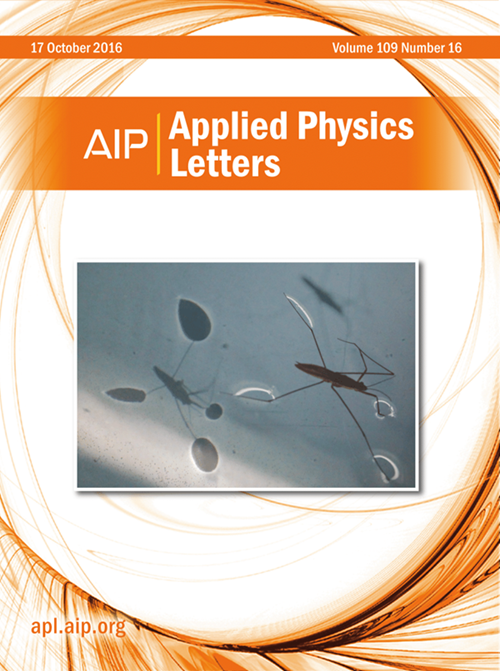Continuous variable quantum teleportation network with star topology
IF 3.6
2区 物理与天体物理
Q2 PHYSICS, APPLIED
引用次数: 0
Abstract
Quantum network allows communication among more than two users with quantum teleportation and high quantum fidelity enabled by non-classical resources. As one of the most versatile architectures, all users are connected mediated by the central station in the star topology network, leading to the realization of the information interconnection and interoperability. In this work, we experimentally demonstrate a 4-branch continuous variable (CV) quantum teleportation network with star topology by employing entangled sideband modes from one squeezed state of light. Here, multiple pairs of entangled sideband modes are distributed on demand to central station and four nodes, respectively. Each node linked to the network has its own communication channel with the central station, where the deterministic CV quantum teleportation protocol is implemented with the fidelities above 0.830.具有星形拓扑结构的连续可变量子传送网络
量子网络允许两个以上的用户通过量子远距传输进行通信,并利用非经典资源实现高量子保真度。作为最通用的架构之一,所有用户通过星形拓扑网络中的中心站实现连接,从而实现信息互联互通。在这项工作中,我们利用光的一种挤压态的纠缠边带模式,通过实验演示了一种具有星形拓扑结构的 4 支路连续可变(CV)量子远程传输网络。在这里,多对纠缠边带模式按需分别分配给中心站和四个节点。链接到网络的每个节点都有自己与中心站的通信信道,在此实现确定性 CV 量子远距传输协议,保真度高于 0.830。
本文章由计算机程序翻译,如有差异,请以英文原文为准。
求助全文
约1分钟内获得全文
求助全文
来源期刊

Applied Physics Letters
物理-物理:应用
CiteScore
6.40
自引率
10.00%
发文量
1821
审稿时长
1.6 months
期刊介绍:
Applied Physics Letters (APL) features concise, up-to-date reports on significant new findings in applied physics. Emphasizing rapid dissemination of key data and new physical insights, APL offers prompt publication of new experimental and theoretical papers reporting applications of physics phenomena to all branches of science, engineering, and modern technology.
In addition to regular articles, the journal also publishes invited Fast Track, Perspectives, and in-depth Editorials which report on cutting-edge areas in applied physics.
APL Perspectives are forward-looking invited letters which highlight recent developments or discoveries. Emphasis is placed on very recent developments, potentially disruptive technologies, open questions and possible solutions. They also include a mini-roadmap detailing where the community should direct efforts in order for the phenomena to be viable for application and the challenges associated with meeting that performance threshold. Perspectives are characterized by personal viewpoints and opinions of recognized experts in the field.
Fast Track articles are invited original research articles that report results that are particularly novel and important or provide a significant advancement in an emerging field. Because of the urgency and scientific importance of the work, the peer review process is accelerated. If, during the review process, it becomes apparent that the paper does not meet the Fast Track criterion, it is returned to a normal track.
 求助内容:
求助内容: 应助结果提醒方式:
应助结果提醒方式:


